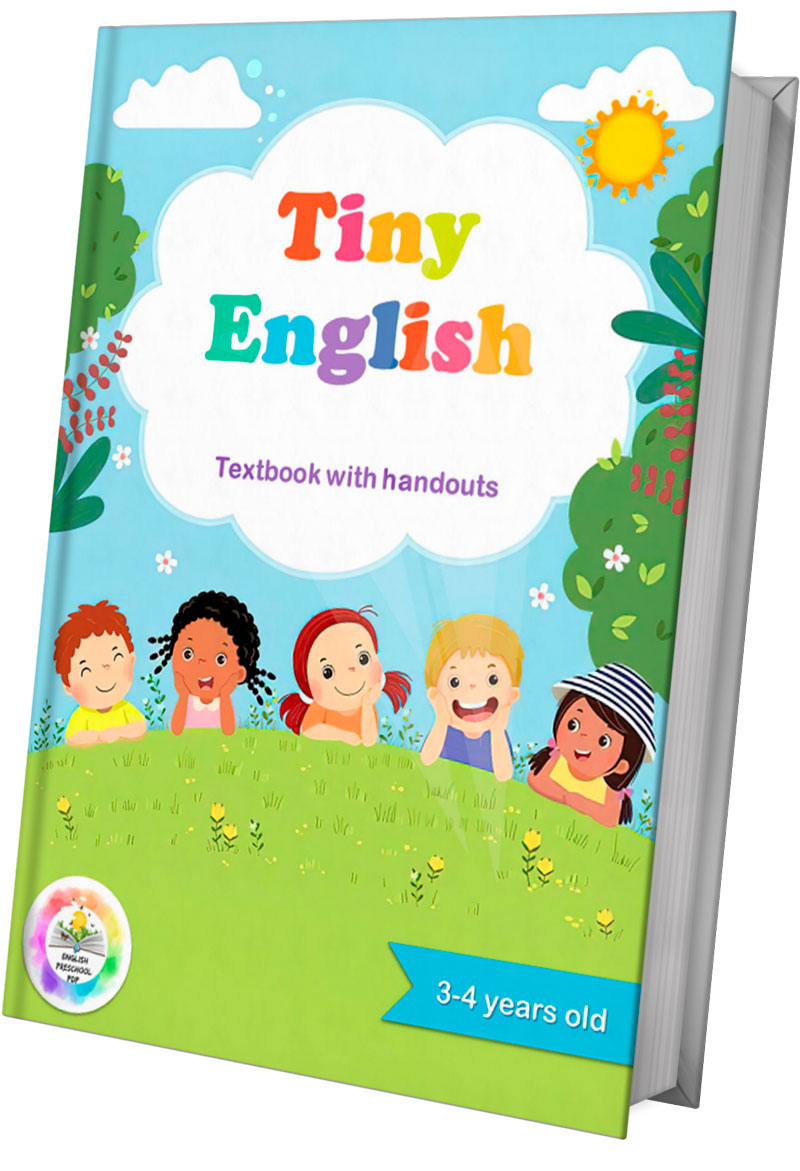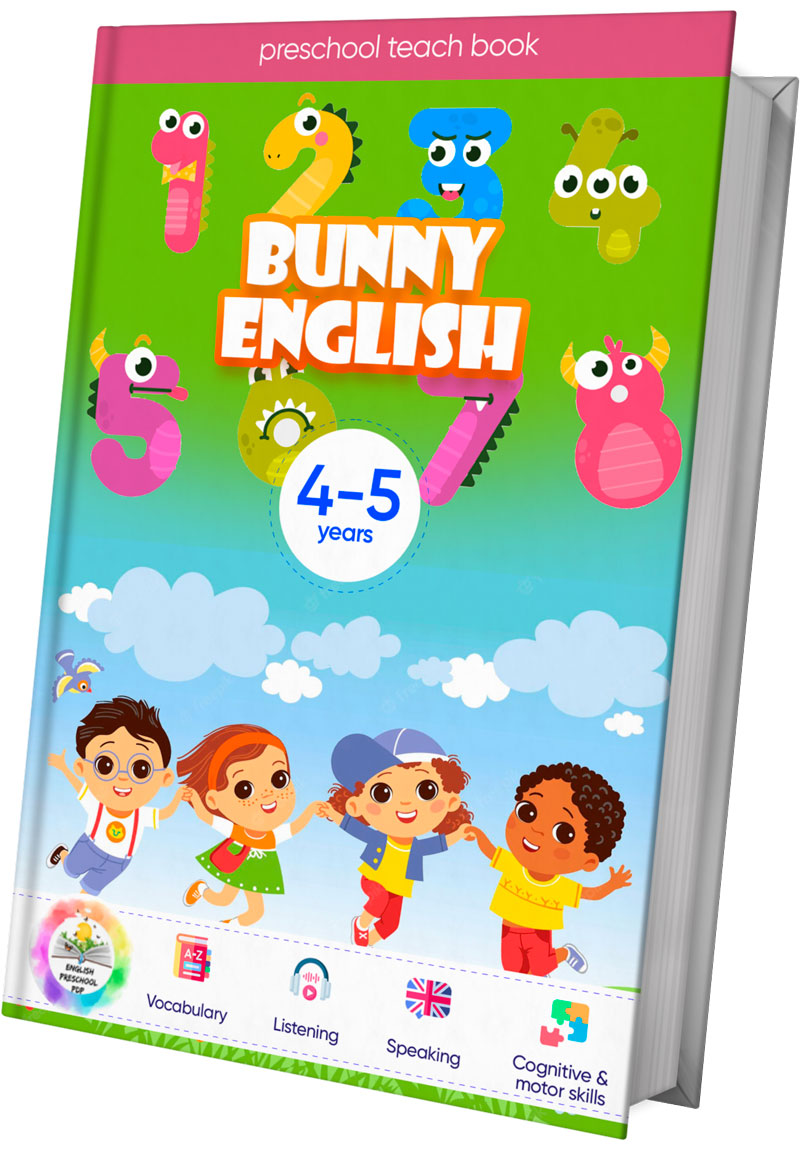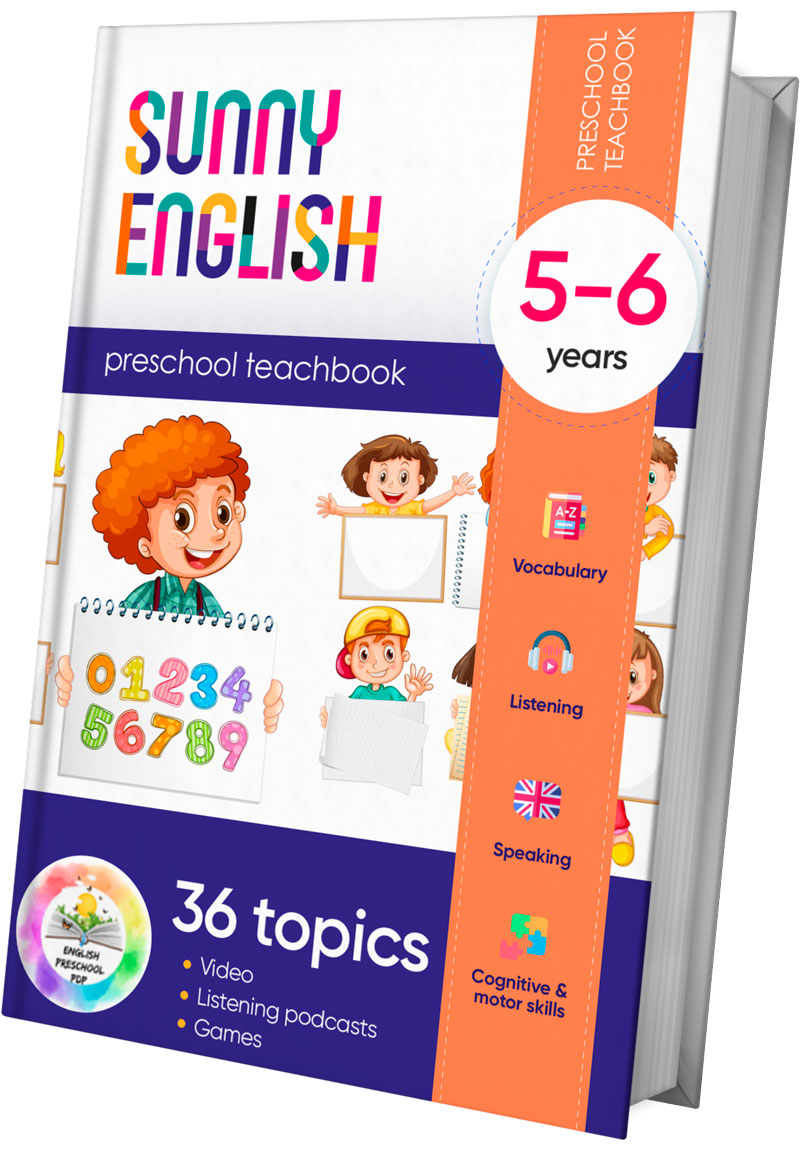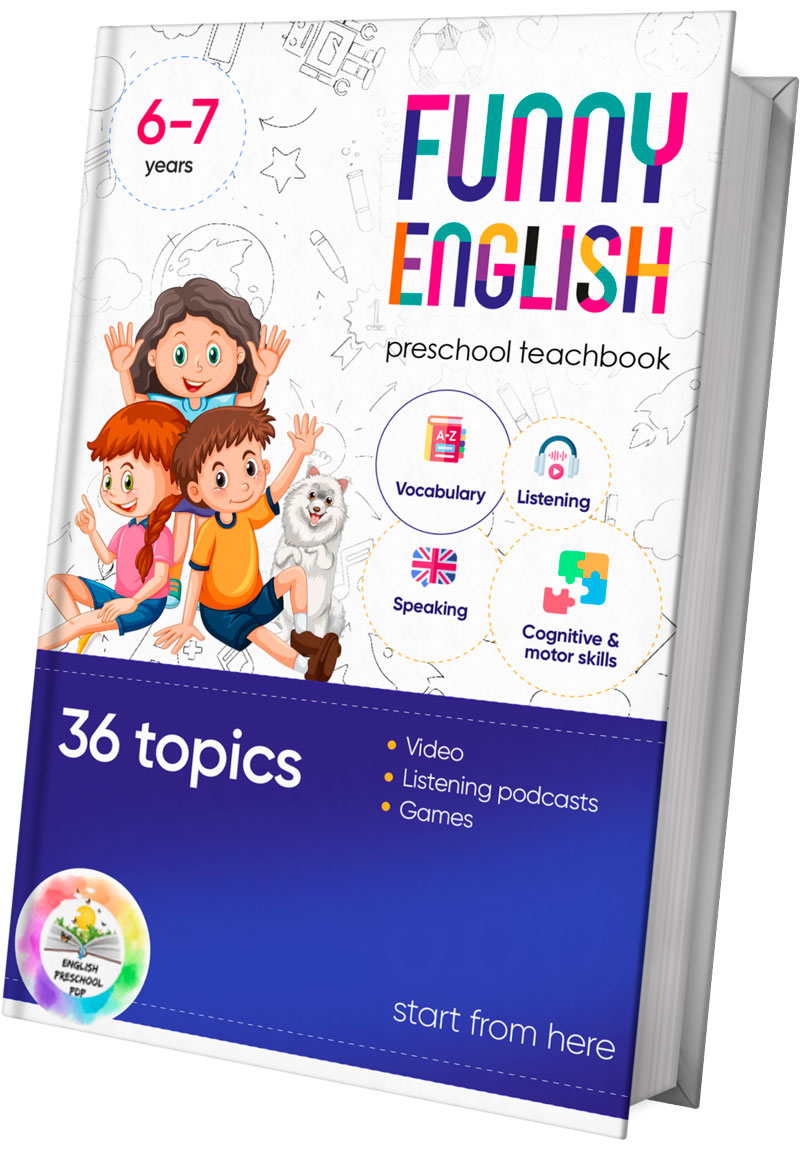Instructions and guidelines
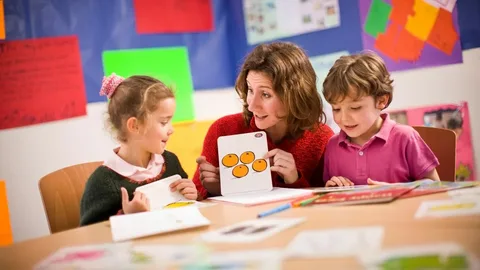
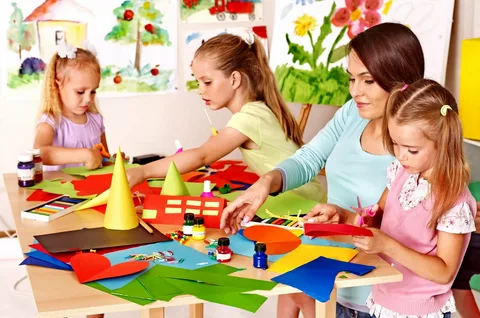
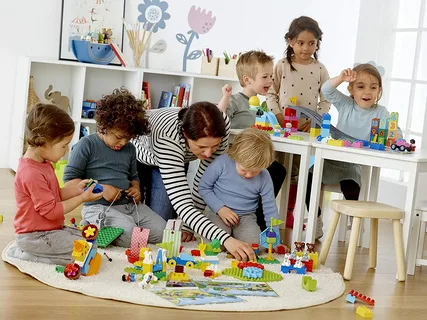
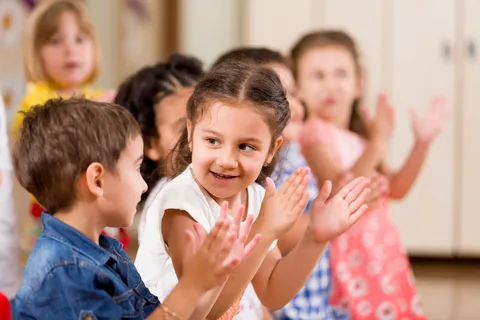
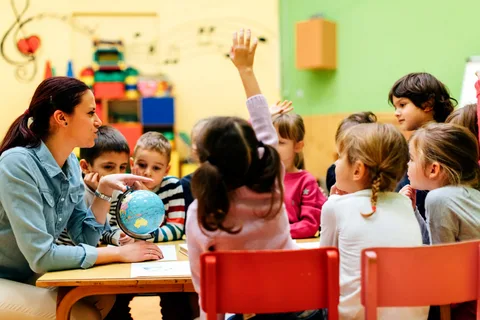
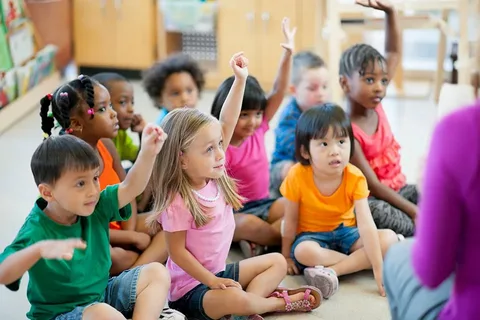
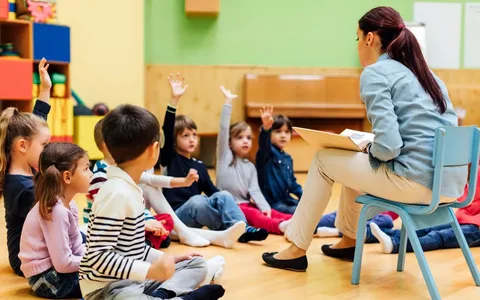
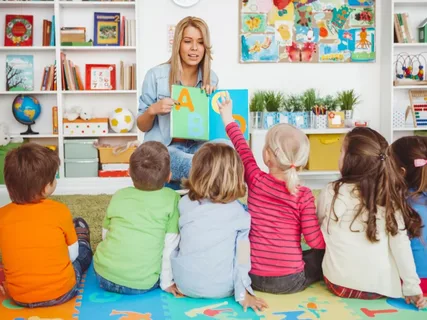
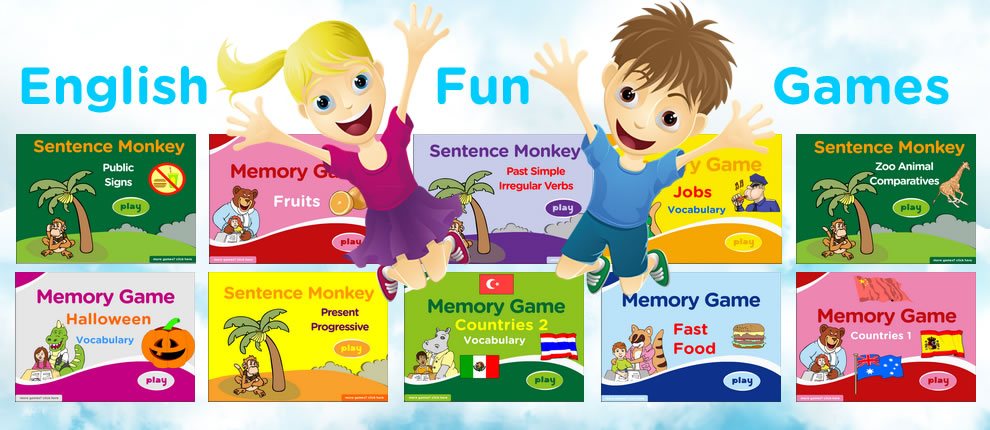
Games in English classes for preschoolers
Teaching foreign languages is a very exciting and very responsible occupation. New times require teachers to take a new approach to this problem. A significant role in teaching foreign languages, in particular English, belongs to the use of educational games or game exercises.
The game sharpens the mental activity of students; it is in the game that children learn social functions, norms of behavior; develop comprehensively. The developmental value of the game lies in its very nature, because the game is always emotions. Where there is emotion, there is activity, there is attention and imagination, thinking works there.
The game is the main activity of a preschool child. During the period of schooling, the game does not disappear, it is preserved as a side, secondary activity along with learning. The use of the game as one of the methods of teaching a foreign language greatly facilitates the learning process, makes it closer and more accessible to children. At every minute of the lesson, it is necessary to maintain children's interest, to cause joy, delight, admiration through outdoor games, toys, magical transformations.
The game is suitable for any type of lesson and type of learning, allows you to optimize the process of memorizing educational material, creates a genuine situation of communication, and contributes to the development of children's communicative competence.
The game is not an end in itself, but is used in combination with other learning technologies.
Practice shows a positive impact on the educational process of all types of games: didactic, mobile, creative. Each game performs its own function, contributing to the accumulation of language material in the child, the consolidation of previously acquired knowledge, the formation of speech skills and abilities. Games are one of the methods of health-saving technologies.
There are six main goals for using games in foreign language lessons:
1. the formation of certain skills;
2. development of certain speech skills;
3. learning to be able to communicate;
4. development of the necessary abilities and mental functions;
5. knowledge (in the sphere of the formation of the language proper);
6. memorization of speech material.
The formation of communication skills in preschoolers through the study of English in the form of a game contributes to the development of the ability to cooperate with each other, actively listen, develop auditory perception, obey the rules.
Through the game, a steady interest in the further study of the English language is formed, as well as confidence in the successful mastery of it. But I want to note that the game has not only motivational functions.
A game is a kind of social practice, an effective reproduction of life phenomena outside of a real practical setting. Game activity in the English class not only organizes the process of communication, but also brings it as close as possible to natural communication. The task of the teacher, according to the statement of Anatole France, is "to awaken the curiosity of children in order to further satisfy it."
Games should correspond to the level of preparation of children and be necessary for the passage of certain lexical material. With the help of the game, pronunciation is well practiced, lexical material is activated, listening and speaking skills are developed. With its help, you can relieve psychological fatigue; it can be used to mobilize the mental efforts of children, to develop their organizational skills, instill self-discipline skills, and create an atmosphere of joy in the classroom.
The use of gaming moments in the classroom contributes to the activation of the cognitive and creative activities of preschoolers, develops their thinking, memory, fosters initiative, and allows you to overcome boredom in teaching a foreign language. Games develop intelligence and attention, enrich the language and consolidate the vocabulary of children, focus on the shades of their meaning. The game can make the child remember the past, replenish their knowledge.
The game in the lesson acts as a method of consolidating knowledge and a way of training.
Finger game “My family” on the topic “My family. My Family"
(bend fingers)
This is my mother
This is my father
This is my brother
This is my sister
This is me
All my family
Finger game “Fish”
I will catch this fish, (the palm of one hand depicts a fish)
I’ll put it on the dish (one palm of the “fish” is placed on the second palm of the “plate”)
Finger game “Butterfly”
Fly, fly butterfly (crossed palms, depict a butterfly)
Fly, fly in the sky (raise your hands up)
Finger game “Fox”
Fox, fox long nose
(connect the thumb, middle and ring fingers together "long nose", index and little fingers straight "ears")
Game "Engine" The teacher will need a train (or any other machine with a body). The teacher is a machinist (driver). Sounds are passengers. At each station, the teacher announces the number of the platform and the number of passengers who must board the car. The child with the named sound joins the train.
Game "Catch the sound" Game for attentiveness, fixing sounds. teacher in advance says what sound the children should “catch”, then alternately names the various studied sounds, the children listen carefully, hearing the pre-agreed sound they “catch” it.
Game "Find a Pair" Children are offered cards with sounds and cards with various pictures that begin with a certain sound. The task of the children is to pick up a sound-picture pair, for example [d]-dog.
“Hot potato” game Children pass one (or several, depending on the number of children) baked “Hot Potato” around the circle and say the rhyme:
Hot, hot, hot potatoes,
Pass it to your friend.
Hot, hot, hot potato
In your little hand!
The child who, at the end of the song, has a potato in his hands, leaves the game. The game continues until only one player remains.
Game "Toffee"
Two willing guys are called. They sit on chairs with their backs to each other at a distance of about 1.5 m. A rope is stretched across the floor, the ends of which protrude from under the chairs, a bag of toffee is tied to it in the middle. At the command of the teacher, the players jump up and run clockwise around the playground with chairs, and the rest of the children - the fans - cheer them up with a song:
I want a little toffee
I want a little toffee
Run, run, run, run,
Who has won?
The end of the verse is a signal for the players. They should go back to their chairs, sit down and, pulling the end of the rope, pull the bag out from under their chair. The lucky one who succeeds gets two candies from the bag, and his opponent gets one candy, for his courage in the hunt for sweets. The game is played as long as there are those who wish, including among parents, to compete for toffee.
The game “What can you do?” on the topic "Animals. Animals»
Children are invited to imagine themselves as some kind of animal and to the question “What can you do?” they should reply: "I can run/jump/swim/fly"
Game "What has changed?"
Pictures on the topic or objects are laid out on the table, all the children look and remember, then 1 child turns away, and the rest of the children change the pictures (objects) in places. When the guesser calls what has changed, he translates the word into English.
Game "What is it?"
The box contains images of various items. The host distributes one picture to each participant in the game, and it is hidden from the rest. Each player (in turn) must tell about the object (or animal) depicted in him, without naming it. It is only allowed to characterize its properties and qualities (color, size, where it occurs, where it is used). The winner is the one who guesses the most images and names them in English.
The game "Traffic light" on the topic "Colors. Colors»
Purpose: to fix the names of colors, to develop attention.
It is necessary to indicate the place of the start, beyond the line, all the guys are at the start, the leader (traffic light) is at the finish line. The host calls any color, for example “Blue”, the children should carefully examine their clothes, if the named color is present in it, take a step forward, if there is no color, stand still. The game continues until someone reaches the finish line first.
The game "Recognize the animal by description" on the topic "Animals. Animals»
Material: subject pictures with pets.
The teacher invites the children to find the animal that he will describe.
Teacher: this animal has a head, ears, sharp teeth, torso, legs, tail. She guards the house, likes to gnaw bones.
The child goes out and finds a picture with a dog, shows it to the children, calling it in English.
The game “Snowball” on the theme “Animals. Animals»
The teacher throws the ball to the children and says the word in English.
1) they translate
2) depict this animal
Game "Translator"
The teacher throws the ball to the child, calls the word in English or Russian, he translates it and throws the ball back to the teacher.
Game “Snowmen and Sun”
Children are snowmen in masks, the teacher is the sun. On command - Run! -snowmen run away from the sun on the chairs.
Lyrics:
Snow, snow
Snowmen grow! (snowmen grow - get up from their haunches, pull their hands up)
sun, sun
Snowmen run! (snowmen run away).
The game "Show me where the nose is?" on the topic "Parts of the body. Parts of the Body"
Mindfulness game. The child must show the body part only if the teacher says, “please”
-show me, please, nose.
-show me ears.
The game “Wolf and hares” on the topic “Numbers. numbers"
The wolf is sitting in the center, sleeping. Hares sing: What's time, Mr.Wolf? Wolf, calls the number. Hares, counting, approach the wolf. Having counted to the named number in English, the wolf jumps up and begins to catch hares.
Broken phone game
Children say to each other in the ear the English word that the teacher called.
Game: “Guess, who? on the topic “Animals. Animals»
The teacher shows the children the house. Children take turns opening the windows, calling the animals they see there. Similarly, such a game can be played on any topic of the lesson by changing the pictures in the windows.
Ball game “Touch” on the topic “Parts of the body. Parts of the body»
The teacher names a part of the body and throws the ball to the child, and he must touch this part of the body to the ball.
Game "What can you see?"
Prepare a card with a small hole in the middle. Cover a picture with the image of various objects with this card, leading a hole through the picture, give the children the opportunity to answer the question: “What is it?”
The game “At the zoo” on the topic “Animals. Animals»
The teacher invites the children to go to the zoo. On the way to the zoo, the children sing a song together with the teacher:
We go, go, go
to the zoo,
to see brown bear
A big gray kangaroo!
At the zoo, the teacher, pointing to the animals, asks the children questions:
- What is this? – This is a crocodile.
Is this a little crocodile? – No, this is a big crocodile.
- There are dolphins, bears, lions.
Game "Tell me what?"
Purpose: To teach children to highlight the signs of an object.
The teacher (or child) takes objects out of the box, names them, and the children point to any sign of this object.
If the children find it difficult, the teacher helps: “This is a ball. What is he?
Game "Wake up the cat"
Target. Activate the name of animal cubs in the speech of children.
Material. Animal costume elements (hat)
Game progress: One of the children gets the role of a cat. He sits down, closing his eyes (as if sleeping), on a chair in the center of the circle, and the rest, choosing the role of any animal cub at will, form a circle. The one whom the teacher points out with a gesture gives a voice (makes an onomatopoeia corresponding to the character). The task of the cat is to name who woke him up (cockerel, frog, etc.). If the character is named correctly, the performers switch places and the game continues.
Day/Night game
Day-day-mice run around the clearing, the owl sleeps.
Night-night- the owl wakes up and catches mice.
Game “What is missing?”
Children close their eyes on the command “Close your eyes”.
“Open your eyes” open their eyes and guess which toy is missing by calling it in English.
Yes-No game
The teacher or the child shows the children a toy, calls it incorrectly/correctly in English. Children do not / agree - Yes / No - yes / no.
-this is a cat
-no! This is a dog.
Game "Following"
There are paper marks on the floor. Children step on footprints, count them in English from 1 to 5 or from 1-10.
Game "Guess who"
The child is tied a scarf over his eyes, he takes a toy, calls it in English. Children disagree- Yes/no.
Game “How many?” on the topic "Numbers. numbers"
On the table are toys from 1-10 or 1-5. Children close their eyes on the command -close your eyes. I'm removing the toy. Open your eyes - open - count in English how much is left.
-how many?
-eight!
Game "Pass the Sound"
Children pass the ball to each other and say the sound that the teacher called.
Game "Across the river"
Children cross the painted river over pebbles, count them in English from 1 to 5 or 1-10.
Touch game
The teacher calls the part of the body in English, the children touch.
-touch your nose/ear/head/etc.
The game “I will freeze” on the topic “Parts of the body. Parts of the Body"
The teacher shows the children Santa Claus mittens.
These are Santa's mittens. They can freeze anything they touch. Now I will name the part of the body in English, and you hide it, otherwise I will freeze it!
I say: freeze your nose! (Children hide their noses). Froze your ears! (Hide ears).
Game Go! Go! Go!"
Go! Go! Go! (we walk)
Quick and slow (we walk quickly, slowly)
Quick and slow
Tip-toe, tip-toe (on tiptoe)
Stop! (not moving, standing still).
Cat and mouse game
I am a mouse, (mice stroke the cat)
You are a cat
One, two, three
Catch me! (cat catches running mice).
Conclusion
The game is characterized by an atmosphere of enthusiasm and joy, a sense of the feasibility of tasks - all this helps children overcome shyness that prevents them from freely using the words of a foreign language in speech, and has a beneficial effect on learning outcomes. At the same time, the language material is easier to assimilate - and at the same time a feeling of satisfaction arises - "it turns out that I can already speak on an equal footing with everyone."
For the teacher, the main thing to remember is that the game is only an element of the lesson, and it should serve to achieve the didactic goals of the lesson. Therefore, it is necessary to know exactly what kind of skill, skills are trained in this game, what the child did not know how to do before the game, and what he learned during the game.
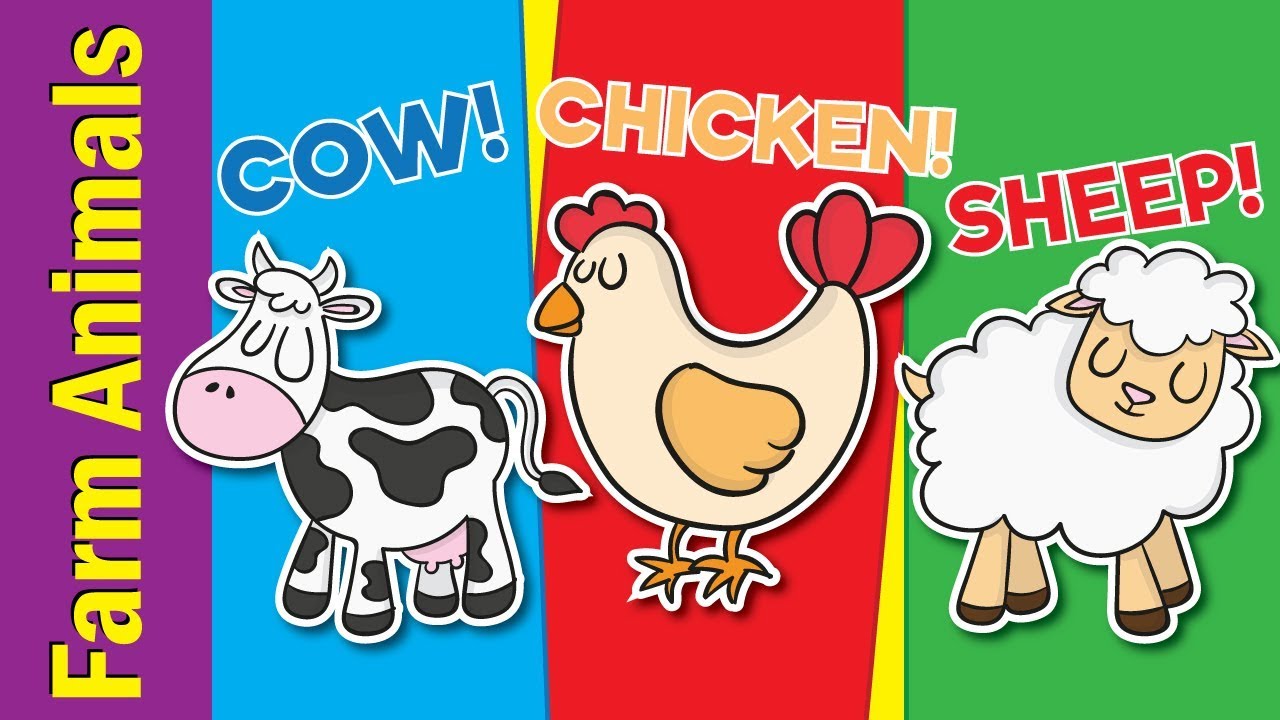
INSTRUCTIONS ON TEACHING ANIMALS IN ENGLISH FOR PRE-SCHOOLERS
Children are fascinated by animals, and are always curious to learn more about them. Here are some age-appropriate ways you can help your preschooler learn about animals.
Start with the basics
Although preschoolers are endlessly curious, their attention spans are also short. They may have difficulty retaining information about a wide variety of animals, so you may want to start with animals your child sees most often, such as birds, cats, and dogs. Talk about the sounds they make, where they live, and things they like to do – “That bird is going home to his nest. Do you think he likes flying?”
If your child seems more interested in one particular animal, encourage that interest. A favorite animal doesn’t mean that your preschooler won’t learn about the others. In fact, having a favorite animal is an ideal foundation for learning about other animals later on.
Teach them to be gentle
Children learn through hands-on experiences, but that may not always be the best way to interact with animals. When coming face-to-face with a pet or an animal in a petting zoo, remind your child to be gentle and avoid touching the animal’s face or pulling its tail or ears. Not only will this help the animal to remain calm, it will also teach your child kindness to animals.
Teach them to be safe
Of course, there are times when touching an animal is not a good idea at all. In those cases, keep your child at a distance, but allow her to observe the animal if it’s safe to do so, and have conversations about the animal and what it’s doing. If you are walking with your child and see a dog approaching, be sure to model safe behavior by asking the dog’s walker if you and your child may say hello to the dog.
Showing your child that animals need their personal space will not only teach compassion, but it will also demonstrate a valuable safety lesson.
Let your child help with the family pet
If you have a family pet, letting your child help with its care is an ideal way to help him learn about animals. Depending on the age of your child, this may be as simple as helping to fill the cat’s water dish, or asking your older child to take the dog for a “walk” in the backyard. Letting your child help take care of the family pet will show him that animals have unique physical, social, and emotional needs. He’ll also feel a sense of pride and feel a stronger connection to the family pet.
Play pretend
We’ve written before about how make-believe lets children develop creativity and problem-solving skills, but it can also encourage empathy. When your child engages in imaginative play, she can explore what another person – or animal – is thinking and feeling, and understand why.
Your preschooler may pretend to be the family dog or the squirrel you saw in the park earlier that day. She may also enjoy pretending her stuffed elephant best friend is a real elephant, and this can be an ideal opportunity to teach her about the real-life habitats and behaviors of elephants.
Learn through animal-related books and songs
Books and songs are a good way to expose your child to age-appropriate information about animals. They are entertaining as well as informative, keeping your preschooler interested while he learns.
You can take the education further by asking your child questions about the book or song, such as, “What else do you think a mouse would eat?” This is another way your child can develop empathy towards animals.
Children love to learn about animals. With strategies such as teaching kindness, playing imaginative games, and reading and singing together, you can teach your pre-schooler about animals in an engaging and age-appropriate way.
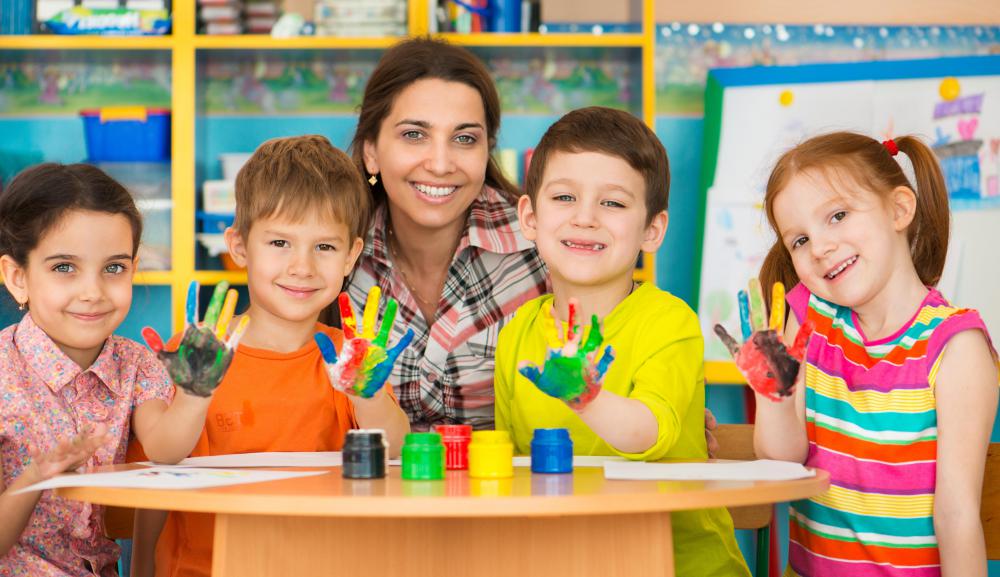
5 TOP TIPS TO BE AN OUTSTANDING TEACHER AT KINDERGARTEN
Teaching English to very young children can be challenging, especially if you haven’t done any training for the early years classroom. These are the most effective ways to teach English pre-school children
1. Build your understanding of how young children learn
It is vital to get the approach right for children of this age. You soon realise that children learn and develop at different rates and in different ways. If we don’t understand the age group, we can end up doing more damage than good.
You need to understand what to expect from the children and make sure that what you do in class reflects where they are in their development. For example, in a total physical response activity, don’t get them to hop if they can’t yet balance on one leg, and don’t ask them to write if they can’t hold a pencil.
Understanding this is essential and it helps us recognise that changing and mixing activities is the best way to keep children motivated. Conversely, expecting young children to pay attention for extended periods in a teacher-centred lesson only leads to frustration and behavioural issues. So plan your classes, but be prepared to let go and adapt activities based on the needs of the children.
2. Understand how play stimulates a child’s natural curiosity to learn
In their early years, children are full of curiosity and keen to learn about everything and anything. This intrinsic motivation is your best ally. Identify what interests them, and you will be able to grab and hold their attention.
For example, if there’s a cartoon character the class loves, you can make up stories or scenarios with them. Invent stories about what the character does at the weekend. Do they play football or paint pictures? What do they eat for lunch – apples or hamburgers? There are numerous opportunities to introduce new language into this kind of activity, especially as the context and characters will be familiar to the children. Each of them can come up with their own ideas about the world around them, which stimulates creativity.
You can also introduce language into the child’s world using toys, costumes, plasticine, dolls, cars, blocks, etc. You could even revisit the scenarios created in your character stories by encouraging children to make the things the character ate for lunch out of plasticine. This will provide opportunities and reasons for children to hear and say new words and become familiar with them. Learning through play in this way offers a meaningful way for children to have fun as they learn and develop.
3. Talk to the children and encourage them
Once you motivate children and get their full attention, the linguistic opportunities are vast. This is where you can model (i.e., give examples of) the target language by asking questions, describing what you are doing, showing interest in what they are doing, and so on.
Make sure you encourage children so they feel confident. Praise their perseverance when they find something difficult, so they don’t give up. This will help encourage their growth mindset – that is, their willingness to embrace learning.
4. Tune in to the child and empathise with them
You can really build strong relationships with children by putting yourself in their shoes, and entering their world. Physically crouching down and being at their eye level will help you connect with children. But you will learn the most about them by joining in with their play. This allows you to establish a relationship with the child based on something they are enthusiastic about. It will help you understand what they like and what they are interested in.
Building relationships is really important in the classroom. It will help provide a safe environment, which is essential for effective learning. Establishing this will mean you can watch children grow in confidence, and you should begin to notice that even the more reserved children are prepared to have a go and try things out.
It also gives children an opportunity to deal with their feelings, and encourages sharing, turn-taking, and being a good friend. For example, you can get the class to build an obstacle course in the classroom. This will encourage them to work together and communicate with each other, offering them situations where they can make friends and grow as individuals. This can be a great opportunity for you to observe the class and level of development of each child.
Just as important is keeping in touch with the child’s other teachers and regularly communicating with parents. Gaining an understanding of what is going on at home and in the kindergarten allows you to recognise how everyday events are affecting the children and their learning.
5. Observe and challenge at the right level for the individual child
Observe children when they are playing and learning, to see where they are in their development. It is important to remember not to isolate skills but to consider the child’s entire learning. This information is vital in planning your classes and allows you to build on what children know, and increase the challenge at an appropriate rate.
Challenge keeps children motivated. Activities such as inventing stories not only improve their English language skills, but develop their creative skills at the same time. For example, you could ask them to adapt the words to songs or rhymes, giving them a chance to experiment with words and sounds. Supporting a child’s development through memorable challenges like this will allow them to develop a positive attitude towards learning English that they will take into later life.
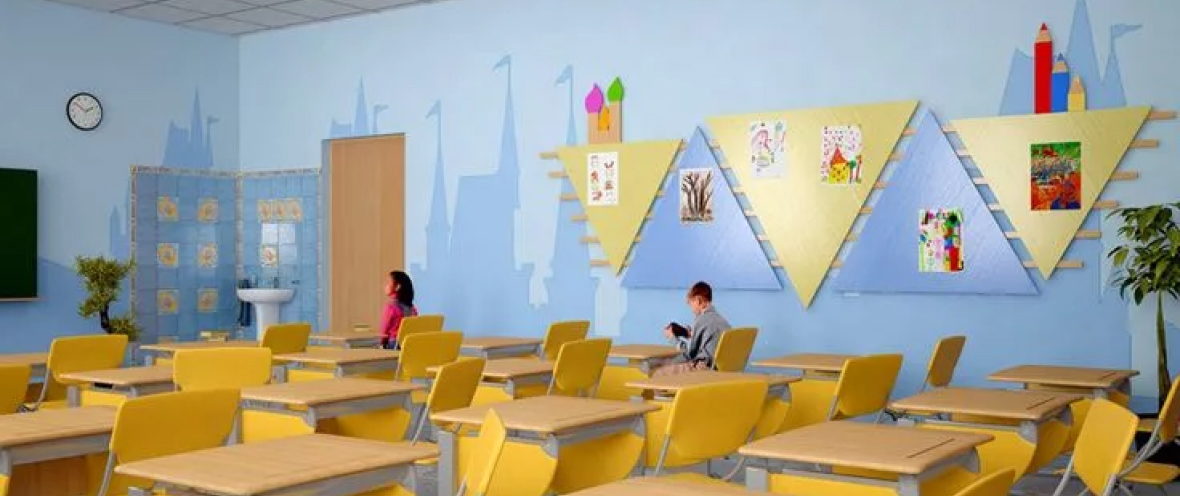
Classroom size
In an average kindergarten class in is from 15 to 20 children. It is not easy to teach kids especially when they are in a big group. It takes many years to learn class management and time management, which are the keys to be proud of the student instead of getting crazy. In the first two weeks of school, all kids should be able to understand very basic oral directions like sit down, stand up, come here, circle time, sit at the table, etc. Then we can work on simple rules during the lessons. Children always need an explanation – even if they do not understand. Every rule or order should be told with other materials like flashcards or a song. Singing for cleaning up, being quiet or looking at the teacher is very helpful – if the class has a favorite song or any melody they like, you can change the lyrics and sing for them during making a craft or going to the toilet, with kids it’s all about having fun. Every teacher should remember that kids are not like adults – they do not get embarrassed when the teacher raises the voice. To grab kids’ attention is needed something catchy, something nice, something they can stare at for a moment.
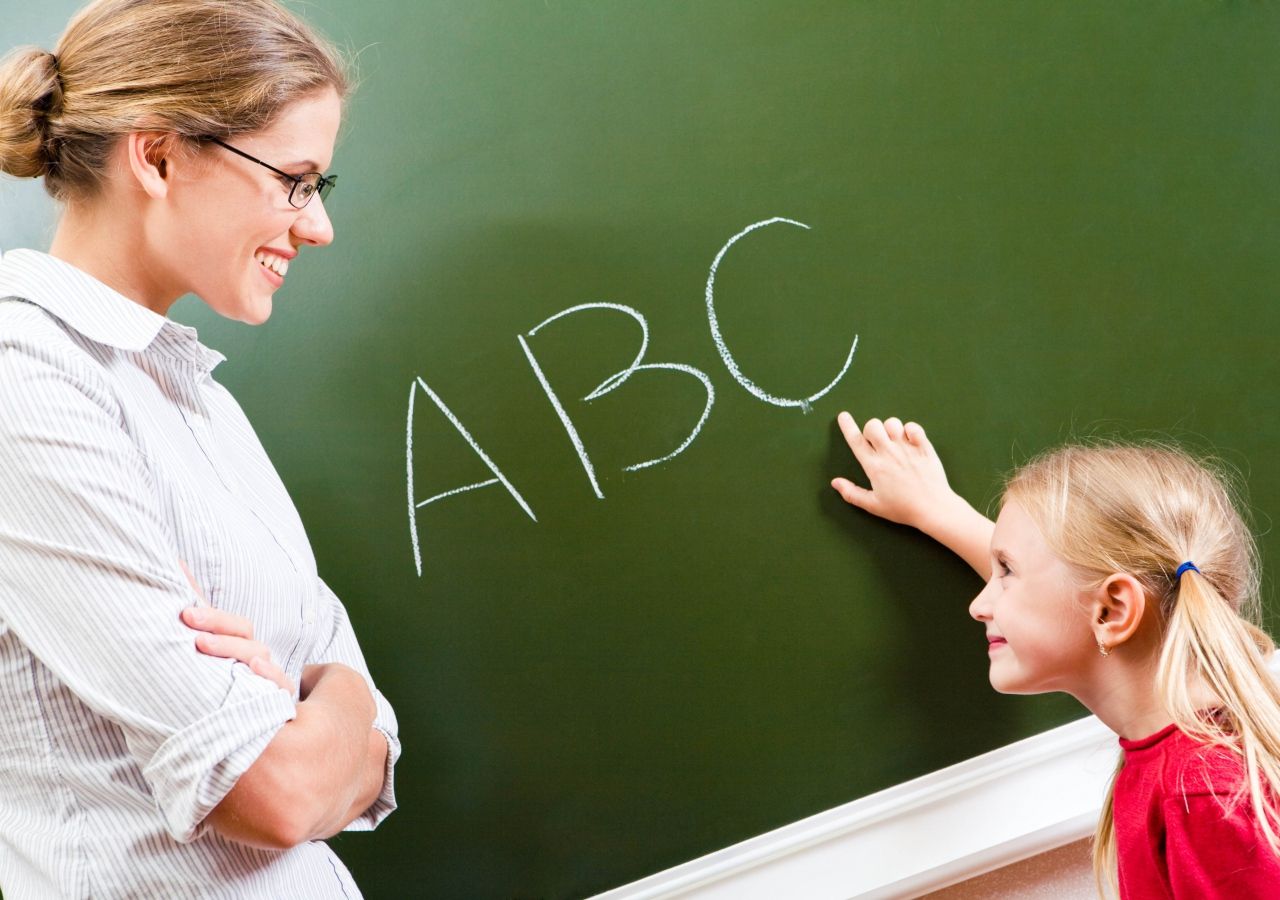
One of the most common problems in teaching young children is the accent of the teacher.
As we mentioned before, kids listen, observe and repeat what they hear. That is why the teacher who works with very young learners should have a good (native-like) accent, should pronounce the words correctly. Since the kids of age 3 to 5 cannot read, they learn only from what they hear. That is why there are songs to teach them almost everything from basic greetings to brushing their teeth and flushing the toilet. All materials only help, but the teacher is the center of knowledge for them, the teacher has to take care of the language the most.

Children might not like the language if they do not like the teacher.
At the age of 4 kids want to play and have fun. They need someone who will play with them, hug them, laugh with them and make them feel safe. That is why a kindergarten teacher has to be like a mother, sister, friend, doctor, actor, clown and – my favorite – a magician. It depends on the situation the teacher has to comfort the student. Learning will be much easier for kids if they love their teacher. Not every teacher can fool around and do ridiculous things just to make children laugh, but this is the key.

One of the most important aspects of working with young children is imagination and patience.
Especially while working as an IEP (Intensive English Program) teacher. Kids cannot see the world as adults do, everything is different for them, every single detail of the day, room, movie or book. Teachers as grown-up people very often do not remember when they were kids themselves – the first of serious mistakes at being a preschool teacher. The way we talk to kids, the way we explain the things around them, the way we read the books or tell stories, that all matters. If details are so important how do we do it as a foreign English teacher? Children in Japan, Venezuela or Turkey cannot understand us. Here come the body language and mimics. Teaching English in a kindergarten takes a lot of time, energy and patience. With every single word we teach come visual materials, such as pictures, flashcards, objects, songs, and videos, but we cannot forget that the most important is our body. Every lesson with children is a physical challenge! It is not only because of singing and dancing but also our gestures, mimics, and all oral directions must be shown to children. Kids do not translate words, they learn them by observing as mentioned before.
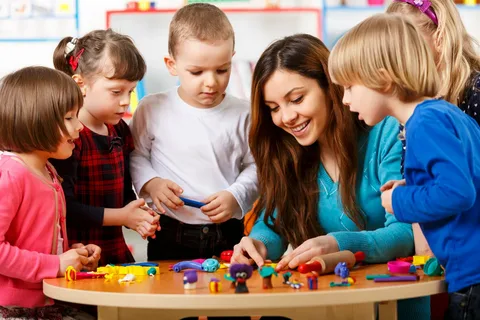
How to Teach English as a Foreign Language in Kindergarten?
Children learn fast, that is a fact. Learning a language is their natural skill, which they are born with. We all have gone through that process. There is no teacher needed to teach a kid how to speak, there is no teacher needed to teach a kid how to pronounce e.t.c. Mothers and fathers are not teachers, but they teach their kids how to speak, or maybe kids learn by themselves? In my opinion, communication is one of the very basic needs, which comes naturally. Children need to talk to their mothers, fathers and other people who are around them.
